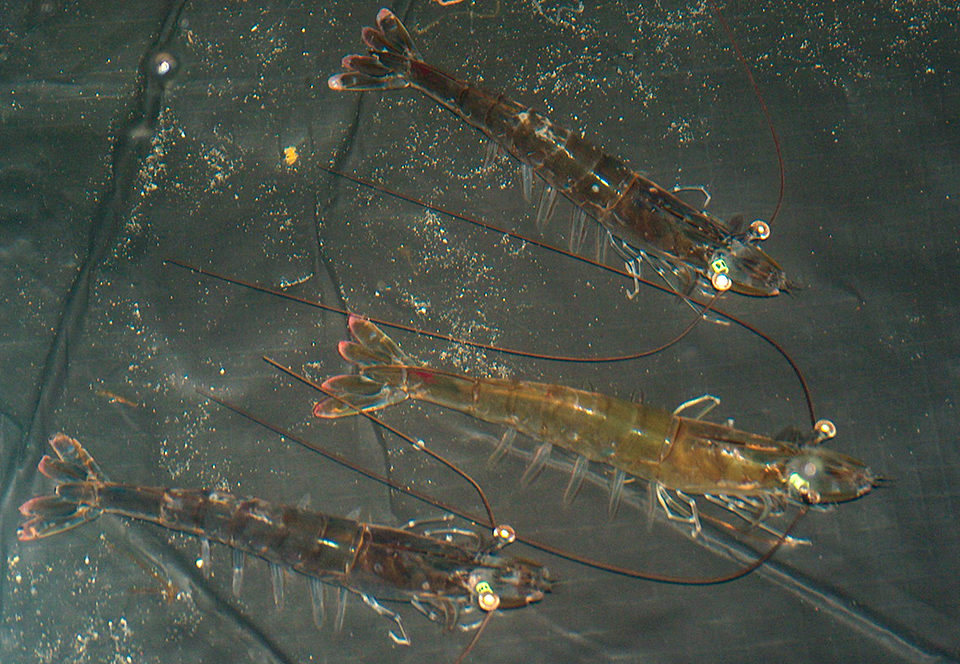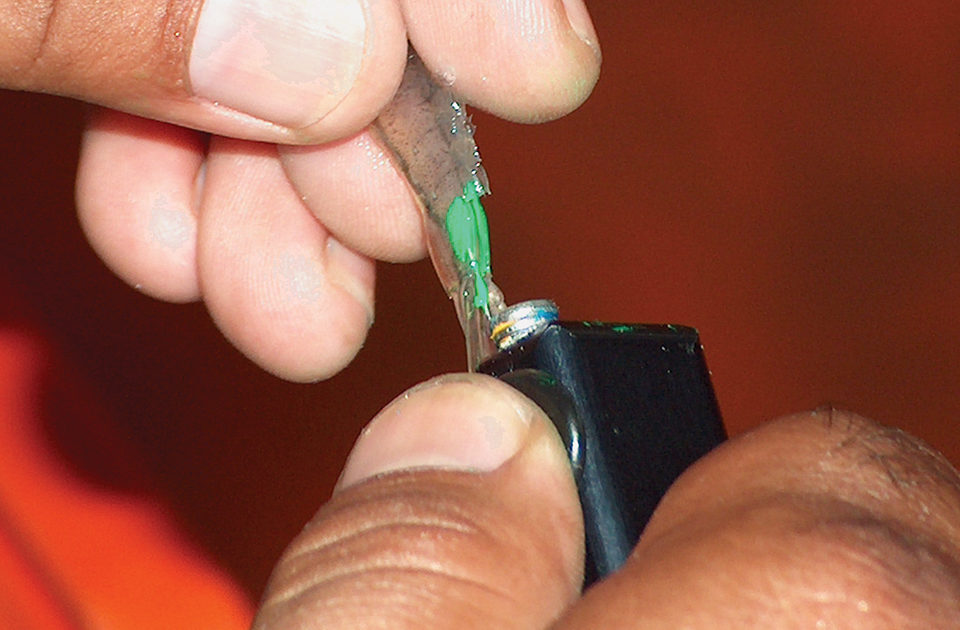Program uses BLUP methodology

The Maricultura del Pacífico, S.A. de C.V. shrimp hatchery in Mazatlán, Sinaloa, Mexico, started a new breeding program based on mixed-model Best Linear Unbiased Predictor (BLUP) methodology in March 2003. In the BLUP system, animal-breeding values are twice the amount of additive genetic gain that an individual passes to its offspring for a given trait.
Supervised by animal-breeding researchers at the Universidad Autónoma Metropolitana and Universidad Nacional Autónoma de México, the program is based on methods increasingly used since the early 1980s in breeding programs for farm animals. It requires individual identification of animals or at least of the individuals pertaining to specific families.
To the authors’ knowledge, this was the first experimental study that used an animal model with a large data set of Pacific white shrimp (Litopenaeus vannamei). It originally started with 17,296 shrimp in 2003, 19,228 in 2004, and 24,212 in 2005.
Production data in the pedigree file was used to estimate the heritability of body weight at 130 days from hatching in a set of different environments, and to estimate the mean family breeding value for body weight using BLUP methodology for the aquaculture industry.
Experimental setup
In the 2003 experiment, using body weight as a criterion, 30 percent of the females and 15 percent of the males from a relatively large number of families were mass selected and individually tagged using numbered rings placed in one ocular peduncle. The family origins of the selected shrimp were identified.
Mature females were artificially inseminated using one male for every two females to produce a breeding design based on full- and half-sib families that avoided mating between siblings. Originally 120 females and 60 males were used for this purpose, although not every mate was successful.
The resulting postlarvae were kept in tanks until they reached around 1 to 2 grams body weight. This body size allowed researchers to tag them individually. About 450 animals per family were injected with a colored elastomer tag to identify families, which allowed mixing families for performance evaluation.
The final data set in 2003 consisted of shrimp from 101 families growing in two commercial units of a Mexican hatchery at two population densities each. The 13,170 shrimp came from 53 sires and 79 dams. Each shrimp was individually weighed at an average age of 130 days.
Results
Heritability values for body weight and within-environment breed-ing values for all the shrimp were calculated using mixed-model methodology with an animal model using a multivariate approach. Since genetic selection in the shrimp industry is based on family selection, families were ranked using body weight phenotypic means and body weight breeding value means based on BLUP solutions.
The results showed an average 45 percent additive genetic variation for body weight at 130 days from hatching, although evidence of heterogeneity of the variation between environments with heritabilities of 20-60 percent, depending on environment opportunity, was found. The authors also found that the rank correlation between family phenotypic means and family breeding value means within an environment was very high. Family phenotypic means ranged 15-22 grams of body weight, while the mean family breeding values ranged roughly -2.71 to 2.97 grams.
Obtaining family BLUP breeding value means allows breeders to better select families in a shrimp-breeding program and even apply different selection intensities within families by combining family and mass selection to optimally increase genetic gain in body weight.

Satisfactory genetic gain
In the last two evaluated selection cycles using BLUP, results showed satisfactory genetic gains per year of 1.5 and 2.1 grams body weight at 130 days from hatching, while maintaining good levels of additive genetic variation.
The breeding program now includes an early selection step that evaluates performance at 25 to 40 days of age from hatching. This allows the selection of the best 108 families out of 216 based on early growth, while the second step repeats the selection process at 130 days in the 108 selected families.
Editor’s Note: Preliminary program results were published at the 2004 Joint Annual ADSA-ASAS-PSA Meeting held in St. Louis, Missouri, USA. Some results regarding early growth family selection as part of the two-step selection program will be presented this summer at the World Congress of Genetics Applied to Livestock Production to be held in Sao Paulo, Brazil.
(Editor’s Note: This article was originally published in the July/August 2006 print edition of the Global Aquaculture Advocate.)
Now that you've finished reading the article ...
… we hope you’ll consider supporting our mission to document the evolution of the global aquaculture industry and share our vast network of contributors’ expansive knowledge every week.
By becoming a Global Seafood Alliance member, you’re ensuring that all of the pre-competitive work we do through member benefits, resources and events can continue. Individual membership costs just $50 a year. GSA individual and corporate members receive complimentary access to a series of GOAL virtual events beginning in April. Join now.
Not a GSA member? Join us.
Authors
-
H. Castillo-Juárez, Ph.D.
Departamento de Producción Agrícola y Animal
Universidad Autónoma Metropolitana, Unidad Xochimilco
Calzada del Hueso 1100 Mexico 04960 -
H.H. Montaldo, Ph.D.
Facultad de Medicina Veterinaria y Zootecnia
Universidad Nacional Autónoma de México -
G. Campos-Montes, M.Sc.
Facultad de Medicina Veterinaria y Zootecnia
Universidad Nacional Autónoma de México
Related Posts

Health & Welfare
A holistic management approach to EMS
Early Mortality Syndrome has devastated farmed shrimp in Asia and Latin America. With better understanding of the pathogen and the development and improvement of novel strategies, shrimp farmers are now able to better manage the disease.

Health & Welfare
A study of Zoea-2 Syndrome in hatcheries in India, part 1
Indian shrimp hatcheries have experienced larval mortality in the zoea-2 stage, with molt deterioration and resulting in heavy mortality. Authors investigated the problem holistically.

Intelligence
A motive, and a market, for farmed fish in Mexico
Boasting ample areas for aquaculture and a robust domestic demand for seafood – not to mention its close proximity to the U.S. market – a land of opportunity lies in Mexico. Fish farming is primed to meet its potential south of the border.

Health & Welfare
A study of Zoea-2 Syndrome in hatcheries in India, part 2
Indian shrimp hatcheries have experienced larval mortality in the zoea-2 stage, with molt deterioration and resulting in heavy mortality. Authors considered biotic and abiotic factors. Part 2 describes results of their study.


